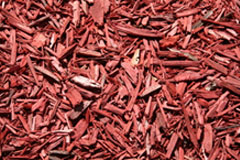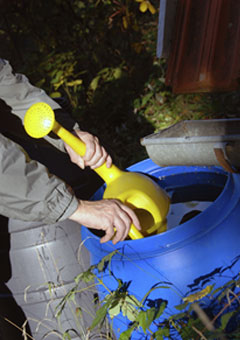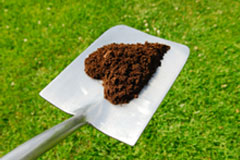3 Tips to Help You Save Water in Your Garden
Even though it might be hard to believe it right now while you’re staring out at all that white stuff, water is a scarce and valuable resource. Though clean water is much harder to come by in some parts of the world than here in Ontario, it still makes sense to conserve water whenever possible. Water conservation saves money, helps the local ecology and can actually result in a healthier landscape.
Here are some ideas for conserving water in your home garden and landscape that will come in handy this spring & summer:
1. MULCH

Shredded hardwood bark, pine bark and pine straw are all acceptable mulching materials. You will need to top off your mulch every year or two depending upon the material and how quickly it is breaking down.
2. IRRIGATION
Though surprising to many people, irrigation systems, if used correctly, are an effective way to conserve water. Watering by hose if often very inefficient. Water is lost to evaporation and sprayed to areas where it is not really needed. By contrast, irrigation systems direct water exactly where you want it and there is a lot of control over how much water you use. Drip irrigation is the most efficient; it releases water slowly at ground level.
3. RAIN BARRELS

Rain barrels can be very simple or somewhat more sophisticated with options for connecting to irrigation systems or a network of multiple barrels. While do-it-yourself rain barrels can be made from plastic trash cans or similar sized containers, an easier option is to buy one from your local landscape supplier. That way you can be sure it is watertight and designed to work properly.
Rain barrels use water efficiently as part of the natural cycle. Downspouts concentrate rainwater at a single point in the landscape; by using a rain barrel, water is spread across the landscape where it soaks into the soil to be used by plants. This is what naturally occurs with rainwater. In Ontario, where rainfall can change dramatically from week to week and month to month, rain barrels are a cost effective way to conserve water and maintain your garden.
HEALTHY PLANTS, HEALTHY PLANET

As we know, conservation is good for the environment. Seemingly small efforts such as installing a rain barrel in your backyard will not only help you save money and water, but will be good for the environment shared by all of us.
If you have a question about taking care of your garden, or you’re interested in investigating a more eco-friendly landscaping design, contact us now.
- WHY TRUST IS SO IMPORTANT TO US - December 15, 2019
- MORE ON LANDSCAPE LIGHTING - February 16, 2019
- 5 Ways Landscaping Can Increase Your Home Value - January 5, 2019
